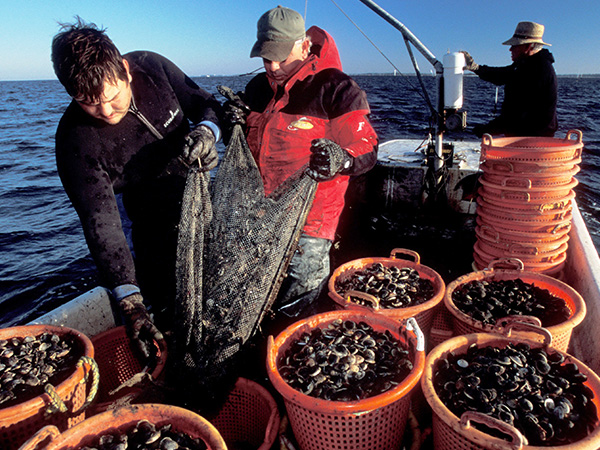Farming of hard clams supports many small businesses in Florida with over 100 million clams produced each year. Farms are located on submerged lands in inshore coastal waters leased from the State of Florida. In siting a shellfish aquaculture lease, the state requires the proposed area to undergo a resource survey and must be devoid of seagrasses and other marine life. Once in production, a clam farm may have over 1000 culture bags planted per acre of lease bottom. When a farmer harvests clams, there are many more marine organisms that inhabit the bags than just the crop. The clam bag creates a favorable environment and provides habitat and protection, both inside and outside, for a myriad of plants and animals. The diversity and abundance of marine life stimulated through farming activities is one of the positive benefits that shellfish aquaculture provides to the coastal environment.
This pictorial guide assists clam farmers and others in identifying these organisms. It also provides information on effects of the organisms on the clam crop and what a farmer might do to lessen those effects. For now, the guide is limited to those marine organisms commonly found in the Suwannee Sound area, where clam leases in Levy and Dixie Counties are located. Many of these organisms can also be found at clam growing areas in other parts of the state.

The following contributed to the development of this guide: Leslie Sturmer, University of Florida/IFAS Extension Shirley Baker, University of Florida/IFAS Fisheries and Aquatic Sciences
Jon Fajans identified and classified the marine organisms in this guide. Images are copyright protected and may not be used without his consent.
If you have any questions about the information provided in this guide, or have found a clam bag "critter" that is not identified here, contact: UF/IFAS Shellfish Aquaculture Extension P.O. Box 89, Cedar Key, FL 32625 Phone: (352) 543-5057 E-mail: Lnst@ufl.edu


COPYRIGHT © 2007 FLORIDA SHELLFISH AQUACULTURE EXTENSION, UNIVERSITY OF FLORIDA, ALL RIGHTS RESERVED